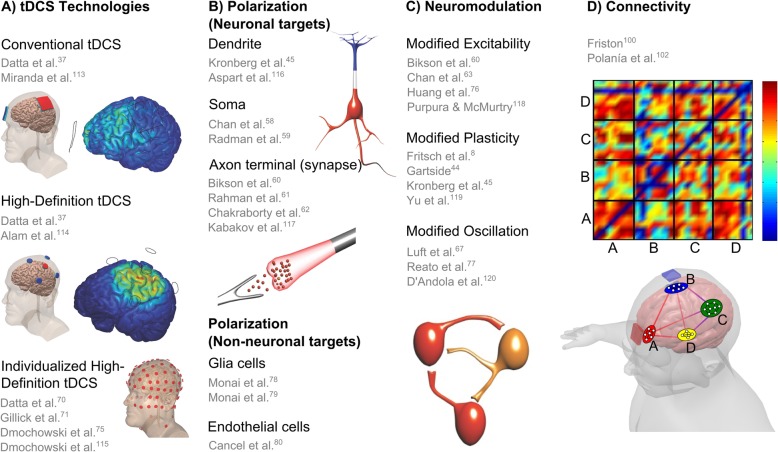Fig. 3.
Physiological basis and mechanisms of tDCS. a Several studies in the last ten years support tDCS technologies with beneficial results using conventional tDCS [37, 113], High-Definition tDCS [37, 114] and individualized High-Definition tDCS [70, 71, 75, 115]. b The current flow direction affects differently dendrite [45, 116], soma [58, 59], axon terminal [60–62, 117], glia [78, 79] and endothelial cells [80]. Anodal stimulation hyperpolarizes apical dendritic layer (blue) and depolarize soma (red) of pyramidal cortical neurons. c The resultant tDCS effects reported are related to modified excitability [60, 63, 76, 118], neuroplasticity [8, 44, 45, 119] and neural network oscillation [67, 77, 120]. d Simulation of four brain networks during tDCS with a connectivity (or adjacency) matrix between a given pair of regions by connectivity strength [100, 102]

